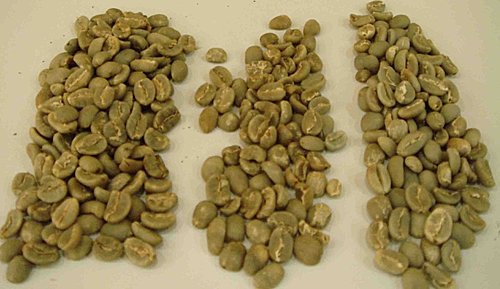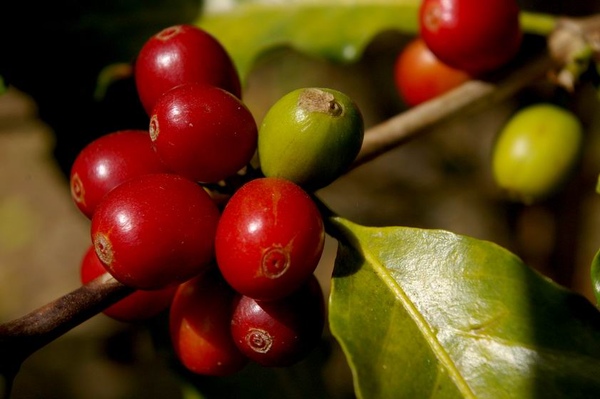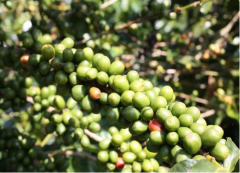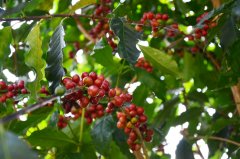Yega Sherry Tuwoknishi Washing Method Ancient Excellent Original Flavor Description
For professional baristas, please follow the coffee workshop (Wechat official account cafe_style)

Ethiopia Yega Xuefei G1 Snow Tuvoknish Water washing treatment
Washed Yirgacheffe Chelelektu G1-Worknesh Worji 2000-2200m (WASH)
Country: Ethiopia (Ethiopia)
Altitude: 1750-1900 m
Annual rainfall: 1900 mm
Variety: Ethiopian native species (Heirloom)
Owner of the processing factory: Alewina Beti & Surafel Birhanu
Growers deal with small farmers in the surrounding area
Treatment water washing, African elevated scaffolding drying (African Bed)
Flavor description:
Dry aroma is orange, blueberry and flower aroma, taste the mouth feel sweet juicy orange and peach, followed by litchi, blueberry, flower and sweet orange, the finish is a long aroma of coffee flowers, the fruit taste is rich and varied.

Introduction:
Located in southern Ethiopia, Yegashafi grows Arabica coffee beans, which are famous for their floral and fruit flavors.
Ethiopia implemented a new trading and grading system in November 2009. in addition to Yega Xuefei, three new producing areas such as Wenago, Kochere and Genlena abaya were added.
Kochere Cochel is located in southwestern Ethiopia, including Fisehagenet and Chelelektu villages, 25 miles to the north is the coffee trading town of Yegashefi, the main local production mode, the production of small farmers will send each output to the adjacent processing plant, Chelelektu town is located in the Kochere producing area, about 100000 people depend on coffee for a living, about 600 farmers make up of small cooperatives Farmers harvest raw coffee beans from nearby primary forests and send them to Teklu Dembel, a water washing station, for treatment.
However, more than half of the coffee grown in Ethiopia belongs to the Garden Coffee type. Courtyard coffee means that small coffee farmers grow coffee in a small area in their own backyard, with an average planting area of 0.5 to 1.5 hectares per household, with coffee as the main cash crop. in addition, miscellaneous grain crops such as plantains are planted as shade and food.
Each farmer is not only self-sufficient in grain, but also produces coffee beans in exchange for other daily necessities.
This mode of production, coupled with the local unique native tree species coffee garden, makes the flavor of each batch of coffee beans different, with considerable uniqueness.
Important Notice :
前街咖啡 FrontStreet Coffee has moved to new addredd:
FrontStreet Coffee Address: 315,Donghua East Road,GuangZhou
Tel:020 38364473
- Prev

Description of bourbon Flavor and Baking suggestion of washing method in Rwanda Coffee Nyungwe Water washing Station
The exchange of professional baristas please pay attention to the coffee workshop (Wechat official account cafe_style). The deep-roasted coffee shows a solid sweetness of brown sugar, with the smell of Earl Grey Tea and five spices, and the fruit flavor is similar to carbonated drinks. Suitable for urban roasting slightly as deep as the whole city baking, but also suitable for brewing Italian espresso. Variety: bourbon grade: A1 raw bean treatment method: water
- Next

Kenya Coffee PB Ndururu processing Plant Kikai-Chesikaki Cooperative selected batch
Professional baristas exchange please follow the coffee workshop (Wechat official account cafe_style) Kenya coffee PB FAQ Ndururu processing plant Kikai Chesikaki cooperative selected batches) KENYA PB Ndururu country: Kenya treatment plant: Ndururu cooperative: Kikai Chesikaki treatment: washing treatment varieties: SL28.SL34 altitude: 1700-1900
Related
- Detailed explanation of Jadeite planting Land in Panamanian Jadeite Manor introduction to the grading system of Jadeite competitive bidding, Red bid, Green bid and Rose Summer
- Story of Coffee planting in Brenka region of Costa Rica Stonehenge Manor anaerobic heavy honey treatment of flavor mouth
- What's on the barrel of Blue Mountain Coffee beans?
- Can American coffee also pull flowers? How to use hot American style to pull out a good-looking pattern?
- Can you make a cold extract with coffee beans? What is the right proportion for cold-extracted coffee formula?
- Indonesian PWN Gold Mandrine Coffee Origin Features Flavor How to Chong? Mandolin coffee is American.
- A brief introduction to the flavor characteristics of Brazilian yellow bourbon coffee beans
- What is the effect of different water quality on the flavor of cold-extracted coffee? What kind of water is best for brewing coffee?
- Why do you think of Rose Summer whenever you mention Panamanian coffee?
- Introduction to the characteristics of authentic blue mountain coffee bean producing areas? What is the CIB Coffee Authority in Jamaica?

